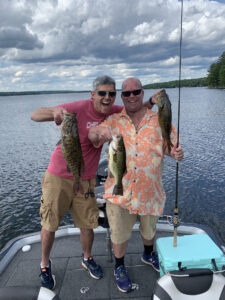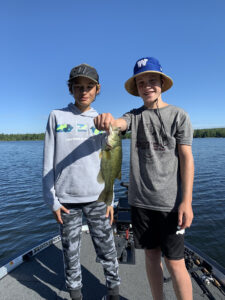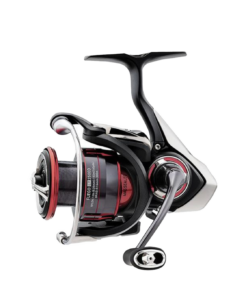Picking Your Pole
A question I get asked often is, what kind of rod and reel should I get? I think I get that question because people feel overwhelmed when they walk into a tackle store and see a vast selection of rods; it is easy to be confused when choosing the right pole. The answer can be broken down in many ways. Factors can include the skill level of the angler, what type of fish you are targeting, and what type of fishing technique you are using. In this article I will try to break this down and simplify your choices so you can easily narrow your search, and select the proper fishing rod for you.
 First, start by choosing a rod and reel combo that is suited to your skill level. If you have a young child or are new to fishing, I suggest using a spin cast type of real which is a closed face spinning reel commonly known as a push button. These reels are the easiest to learn how to use and will prevent you from encountering a lot of tangles and keeping your fishing experience fun-filled worry-free. When selecting a beginner type rod, consider the height of the person using it. The shorter the person, the shorter the rod. This will make the rod easier to control when casting.
First, start by choosing a rod and reel combo that is suited to your skill level. If you have a young child or are new to fishing, I suggest using a spin cast type of real which is a closed face spinning reel commonly known as a push button. These reels are the easiest to learn how to use and will prevent you from encountering a lot of tangles and keeping your fishing experience fun-filled worry-free. When selecting a beginner type rod, consider the height of the person using it. The shorter the person, the shorter the rod. This will make the rod easier to control when casting.
As your skill level increases you can move on to an open-faced spinning reel with a more technique-specific rod. This type of combo is super versatile and will allow you to target bigger fish, and learn several different techniques from jigging to casting, and everything in between. When you get to this step you will start encounter more technique-specific gear. To keep it simple I would suggest a 2500 series reel with a medium-heavy action rod. The 2500 indicates the spool size and line capacity. This is a mid-range reel that can be used for almost any type of fishing. Medium-heavy indicates the action of the rod. This will allow you to use it for many different types of fishing. If you look at the rod it will have an action and a length printed on the blank space near the handle. For example, MH66 stands for medium-heavy action and 6’6” length. Again, I would suggest choosing a rod length that suits the angler’s height. These rods usually come in sizes from 6’-7’3”. 6’ if you are shorter and 7’3” if you are taller.
super versatile and will allow you to target bigger fish, and learn several different techniques from jigging to casting, and everything in between. When you get to this step you will start encounter more technique-specific gear. To keep it simple I would suggest a 2500 series reel with a medium-heavy action rod. The 2500 indicates the spool size and line capacity. This is a mid-range reel that can be used for almost any type of fishing. Medium-heavy indicates the action of the rod. This will allow you to use it for many different types of fishing. If you look at the rod it will have an action and a length printed on the blank space near the handle. For example, MH66 stands for medium-heavy action and 6’6” length. Again, I would suggest choosing a rod length that suits the angler’s height. These rods usually come in sizes from 6’-7’3”. 6’ if you are shorter and 7’3” if you are taller.
When thinking you are ready to get into a baitcasting reel is when things get a lot more technique-specific and complicated; mix that with potential backlashes, and it can be a daunting undertaking. But please do not be intimidated by these reels even if you haven’t casted them before. A lot of companies have come out with ways to combat and minimize the potential of a “birds’ nest”. Quality reels with this feature include the Daiwa SV series and the Shimano DC series. These reels may be a little more expensive than an average baitcaster but will allow you to learn how to cast without the frustration of backlashing. These reels will allow you to target bigger species of fish, and fish more powerfully. With the reel being positioned on top of the rod it gives you more leverage when setting the hook and fighting the fish in heavy cover such as lily pads. These reels come in different sizes related to spool size and gear ratio. I would suggest a 150 size with a 7:1 gear ration which simply means that for every rotation of the handle the spool winds 7 times. These reels commonly come in 6:1, 7:1 and 8:1; 8:1 being the fastest reel picking up the most line per turn. A medium-heavy rod will allow you to be versatile in your techniques.
I hope this helps narrow your search for your next rod and reel and makes the decision easier and less complicated.
See you on the Water!! Tight lines!! Happy Fishing!!
By Mike Williams, Pro Angler & Owner of Williams Outfitters in Curve Lake First Nation
www.williamsoutfitters.com




